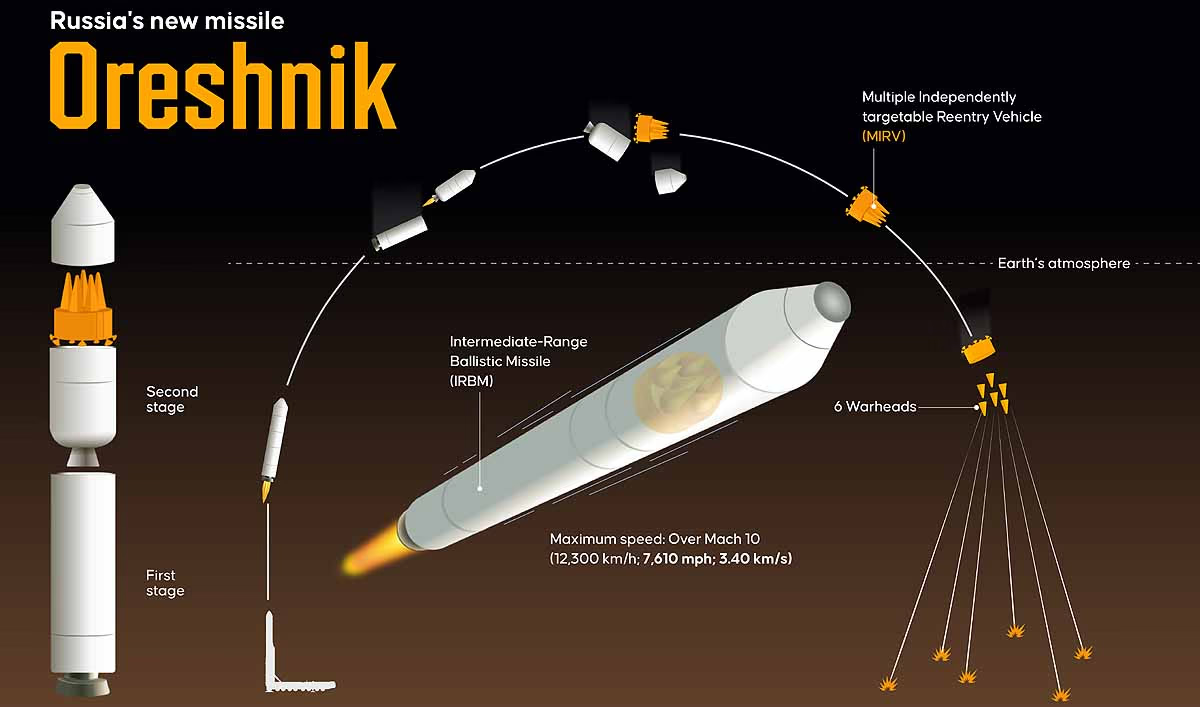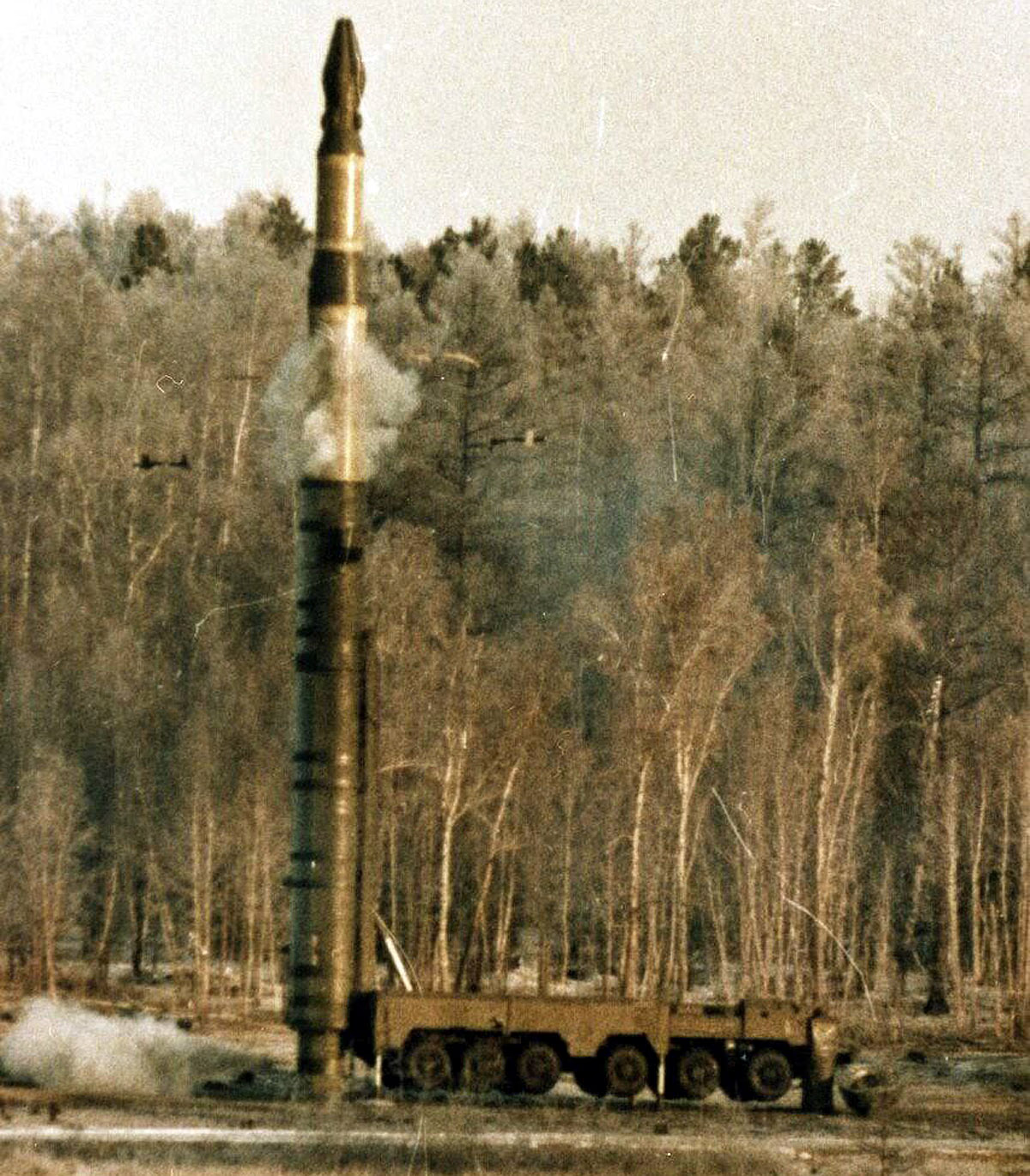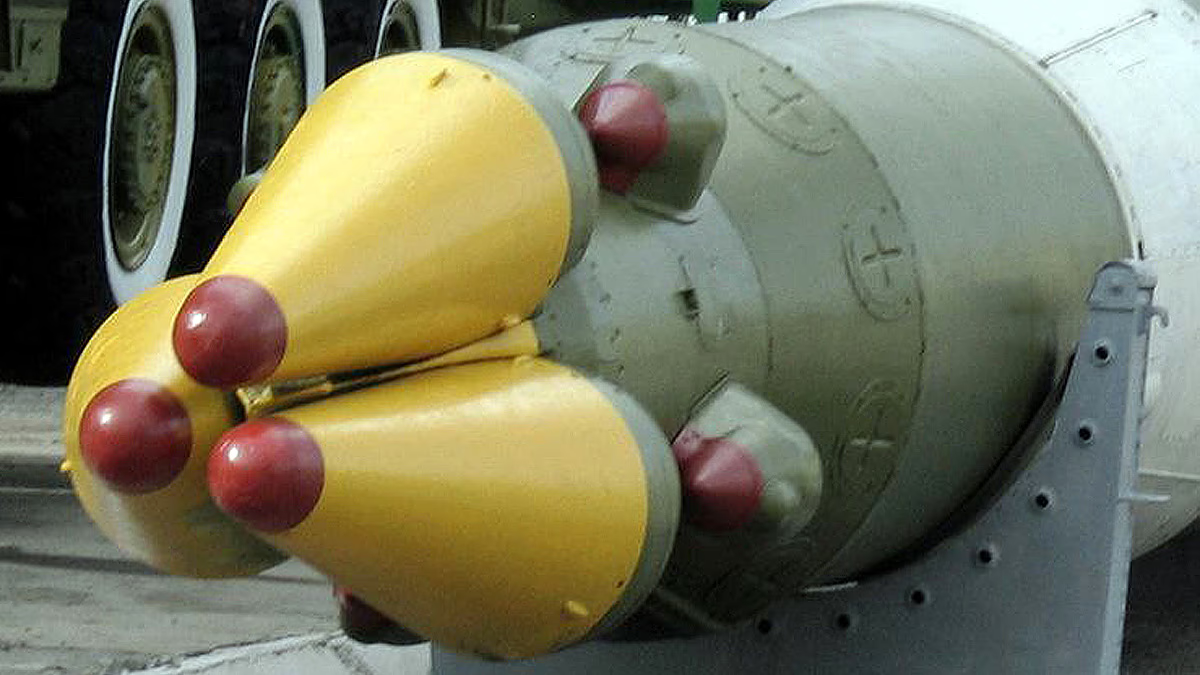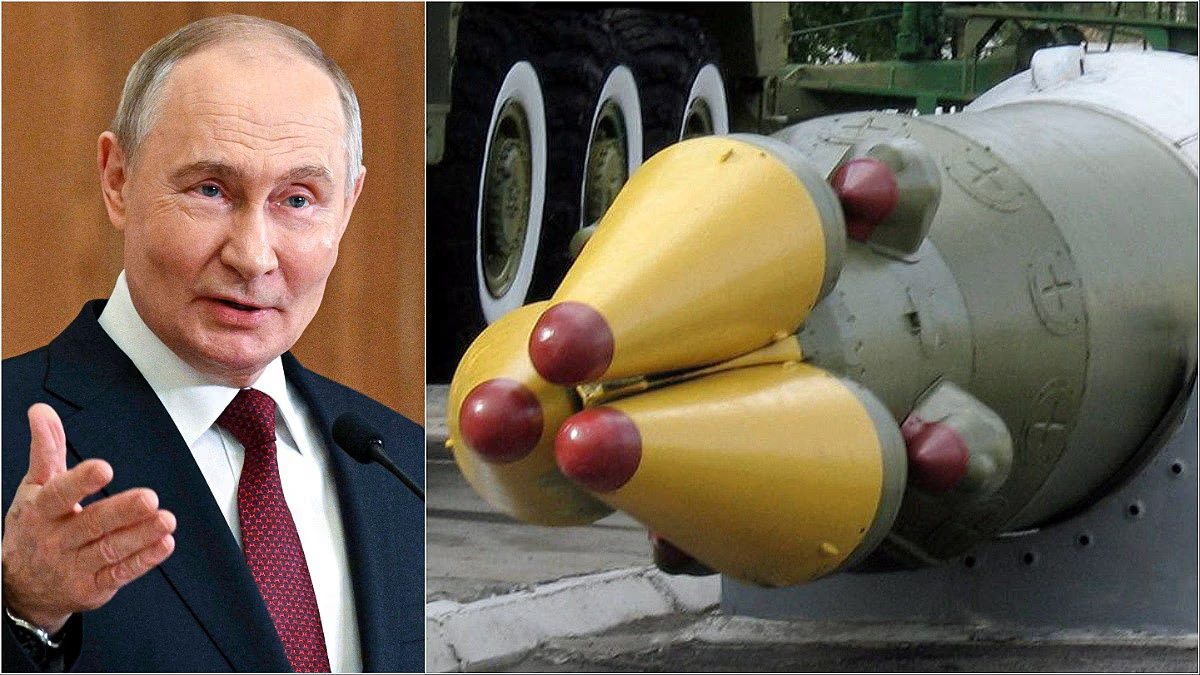On the night of June 5, 2025, Russia launched an Oreshnik Intermediate Range Ballistic Missile (IRBM) attack on Ukraine. This missile, hailed as Russia's most advanced hypersonic weapon, has drawn comparisons to the BrahMos missile of India. Despite its high speed and multiple target capabilities, one Oreshnik launch failed, leaving debris in Kazakhstan. How unique and costly is this missile, and is it truly a copy of BrahMos?
What is the Oreshnik Missile?
The Oreshnik ('Hazel Tree' in Russian) is a hypersonic IRBM deployed by Russia against Ukraine. It was first launched on November 21, 2024, targeting a defense factory in Ukraine's Dnipro city. Russia claims the missile can penetrate Western air defense systems and travels at Mach 11 (12,300 km/h).
Also Read:
Developer: Moscow Institute for Thermal Technology (MITT) and Sozvezdiye.
Base: A modified version of the RS-26 Rubezh missile, incorporating parts from the Bulava missile.
Usage: Can carry both nuclear and conventional warheads. Non-nuclear warheads were used in the Dnipro attack.
Some experts argue it's not a cruise missile like BrahMos but a ballistic missile with different design and technology.
Recent Events and Facts
Dnipro Attack (November 21, 2024):
Russia targeted a defense factory in Ukraine's Dnipro with the Oreshnik missile in response to Ukraine's ATACMS and Storm Shadow attacks on Russia. President Vladimir Putin described it as a 'high-tech reply' to Western weapons.
Also Read:
Debris in Kazakhstan (February 2025):
In February 2025, reports emerged of a failed Oreshnik launch with debris falling in Kazakhstan. Despite a claim of missile malfunction by a Ukrainian blogger, there's no official confirmation.

Source: aajtak
Production and Cost:
In December 2024, Putin announced mass production of the Oreshnik. A former Russian defense engineer told The Moscow Times that mass production may take 5-7 years due to bureaucratic hurdles and lack of innovation. Ukraine's intelligence agency estimates Russia can produce 25 Oreshniks per month (300 annually).
Cost:
Although more expensive than the Iskander-1000 missile, the exact cost remains unknown. Allegations of significant monetary embezzlement in production circulate.
Deployment in Belarus:
By the end of 2025, Russia plans to deploy Oreshnik missiles in Belarus, as per the Belarus Security Council Secretary, Alexander Volfovich.
Ukraine's Response:
Commander-in-Chief of Ukraine, Oleksandr Syrskyi, announced the development of an indigenous air defense system to counter the Oreshnik. President Volodymyr Zelensky claims some air defense systems can intercept the Oreshnik.
Also Read:
Features of the Oreshnik Missile
The Oreshnik missile is renowned for its speed and multi-targeting capabilities. At Mach 11 (12,300 km/h or 3.4 km/sec), it travels 11 times the speed of sound. Russia holds that its immense speed makes it challenging to track by radar or air defense systems like THAAD.

Source: aajtak
Range:
5,000-5,500 km. Capable of covering most of Europe and Ukraine. Some reports indicate it launched from Kapustin Yar (Russia) to Dnipro.
Warhead:
Six independently targetable warheads (MIRVs), each with six submunitions (total 36). Capable of striking multiple locations simultaneously. Equipped with both nuclear and non-nuclear payloads. Non-nuclear warheads were used in the Dnipro attack. Individual warhead weight is undisclosed, but Russia claims the potential for nuclear-level devastation.
Trajectory:
High-arc flight path, challenging to intercept. Maneuverable warheads can change direction mid-course. Fired from a mobile launcher, making it difficult to detect. Kapustin Yar (Russia) serves as the main launch site.
Also Read:
Temperature Tolerance:
Can withstand up to 4,000 degrees Celsius, generated at hypersonic speeds. Russia currently possesses a limited number (a few dozen) of Oreshnik missiles. Plans for mass production exist, though experts label it costly and time-consuming.
Is Oreshnik a Copy of BrahMos?
Some consider the Oreshnik to be a copy of the BrahMos joint India-Russia missile, though significant differences exist.

Source: aajtak
Similarities...
Both are hypersonic. BrahMos speeds at Mach 3-4, whereas Oreshnik reaches Mach 11. Both have multi-target capabilities. BrahMos specializes in anti-ship and land attacks, while Oreshnik is a ballistic missile. Both feature Russian technological contributions—BrahMos has a ramjet engine, whereas Oreshnik employs RS-26 technology.
Differences
BrahMos: A cruise missile, flying at low altitudes with flexible paths.
Oreshnik: A ballistic missile, flying in high arcs and carrying MIRVs.
Range: BrahMos covers 600-800 km (BrahMos-2 may extend to 1,000 km). Oreshnik spans 5,000-5,500 km.
Warhead: BrahMos carries a single 200-300 kg non-nuclear warhead. Oreshnik includes six MIRVs, nuclear or non-nuclear.
Launch Platforms: BrahMos launches from land, sea, air, and submarines. Oreshnik primarily uses mobile launchers.




